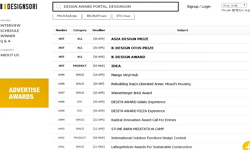A Korean beef brand implies that the beef to which it is given is a safe, reliable product produced by a Korean beef producer equipped with a consistent management system capable of supplying reliable quantities of safe beef to consumers. With the rec...
http://chineseinput.net/에서 pinyin(병음)방식으로 중국어를 변환할 수 있습니다.
변환된 중국어를 복사하여 사용하시면 됩니다.
- 中文 을 입력하시려면 zhongwen을 입력하시고 space를누르시면됩니다.
- 北京 을 입력하시려면 beijing을 입력하시고 space를 누르시면 됩니다.
한우브랜드 이미지강화를 위한 택배용 패키지디자인에 관한 연구 = Research on Package Design for Home-Delivery Service with the Aim of Intensifying the Brand Image of Korean Beef Cattle
한글로보기https://www.riss.kr/link?id=T11553482
- 저자
-
발행사항
서울 : 한양대학교 산업경영디자인대학원, 2009
-
학위논문사항
학위논문(석사) -- 한양대학교 산업경영디자인대학원 , 시각·브랜드패키지디자인전공 , 2009. 2
-
발행연도
2009
-
작성언어
한국어
- 주제어
-
발행국(도시)
서울
-
형태사항
viii, 73 p. : 삽도 ; 26 cm.
-
일반주기명
지도교수: 박규원.
국문요지: p. i-iii.
Abstract: p. 70-73.
참고문헌 : p.68-69. - 소장기관
-
0
상세조회 -
0
다운로드
부가정보
다국어 초록 (Multilingual Abstract)
A Korean beef brand implies that the beef to which it is given is a safe, reliable product produced by a Korean beef producer equipped with a consistent management system capable of supplying reliable quantities of safe beef to consumers. With the recent opening of the Korean market to American beef, the Korean beef industry is facing the fiercest level of competition it has seen yet. Partly in response to this increased competition, the Korean beef brands are making their best efforts to retain customers loyal to the brand by improving the reliability of the beef brands. In particular, the large discount department stores as well as online shopping and the accompanying increase in the volume of home delivery service required have established themselves as the main venues of selling and distribution in the industry. Packaging standards determined by the Agency for Technology and Standards under the Ministry of Information and Economics in 2005 are disregarded by consumers and distributors due to inadequate advertising efforts and the lack of efficient control. The door-to-door delivery of products bearing the Korean beef brands must be quick and accurate, ensuring the maintenance of the suitable temperatures throughout the delivery process. There is, however, a dearth of studies on the designs of packages for beef products that are important parts of visual communication of brand images. In order to examine the designs of packages used in the door-to-door delivery Korean beef products currently available in the market, this study selected the six brand packages for representing the collective Korean beef brands in six regions, all under the supervision of the National Agricultural Cooperative Federation. They are: Hanuram of Gyeonggi-do; Hairok of Gangwon-do; Cheongpungmyeongwol of Chungcheonbuk-do; Tobau of Chungcheongnam-do; Sunhanhanu of Jeollanam-do; and Hanujiye of Gyeongsangnam-do. Most of these Korean beef brands had insufficient appreciation for the importance of package designs in shaping and communicating their brand images. Their package designs even failed to expose the brands adequately to the public. The packages of some brands were inadequate even in terms of protecting products they contained. The investigation involved the purchase of the products bearing these brands on the Internet and the analysis of the materials, structures, and graphic designs of the packages and their inefficient contribution to the advancement of the brands they represent. In terms of the materials and structures used in the packages, plastic wrap used to pack individual items was not sufficient to prevent the items from changing in quality. The insulating materials used as inner packages touching the meat directly changed the color of the meat, appalling consumers who received them. The brands also used as the outer packing materials conventional Styrofoam, without making any efforts to make them visually appealing and differentiated. To overcome some of these disadvantageous effects, packing materials themselves need to change. Individual packaging should involve vacuum packing or gas substitution. Inner package materials should include corrugated cardboard or 우드락 between the insulator and the meat so that the coldness from the insulator would not directly teach the individual wrapper surrounding the meat. The outer packing material should be given more effective graphic designs and visual effects, combining Styrofoam with corrugated cardboard boxes or double PVC-vinyl wrapping. Graphic designs in the current packing materials also revealed some problems, including the fact that the brand logos were shown only using small stickers attached to the individual and inner packing materials and the fact that the outer packing materials did not bear effective graphic designs. To maximize the exposure of the brands to consumers, double-wrapping, ribbons, and double stickers should be used for individual and inner packing materials. Plastic ribbons, corrugated cardboard boxes, fabrics, and so forth may also be added to the outer pacing materials. The overall package should also use much of the main colors used in the brand logos. The difficulties and limits of this study partly arose from the fact that not all of the 202 Korean beef brands provided clear evidence of channels of distribution and sales. This study also did not conduct any consumer polls regarding the package designs currently available in the market. While these difficulties may not have amounted to much had the selected brands used similar package designs, the selected brands in reality used incomparably different packing designs and materials, making it difficult to prepare objective data necessary to forming polling questions. If supplemented with objective data and further, more thorough investigations and analyses, this study could nonetheless contribute much to increasing the income levels of the Korean beef ranchers and industry struggling to overcome the effects of recent competition from overseas beef.
국문 초록 (Abstract)
실증조사는 전자상거래를 통해 상품을 직접 구입하였으며 이를 조사·분석한 결과 한우브랜드이미지향상에 저해되는 재질·지기구조 측면, 그래픽디자인 측면의 비효율성을 찾을 수 있었다. 재질·지기구조 측면의 문제점으로는 낱포장은 랩 포장을 사용함으로 변질의 우려가 있었고, 속포장은 육류에 보냉재가 직접 닿아 육색이 변질됨으로 식감이 떨어지고 소비자에게 불쾌감을 주는 문제점을 발견하였다. 또한 겉포장은 특별한 효과나 지기구조의 차별화보다는 스티로폼 재질을 그대로 사용하고 있었다. 이러한 문제점의 개선방안으로는 낱포장의 경우 진공포장방식 또는 가스치환방식과 속포장은 보냉재와 육류사이에 골판지나 우드락 등의 재질을 사용하여 냉기가 직접 낱포장에 닿지 않도록 하는 방식이 필요하다. 겉포장으로는 스티로폼위에 골판지재질의 상자나, PVC비닐을 이중으로 포장하여 그래픽디자인을 효과적으로 활용하는 방안이 바람직할 수 있다. 그래픽디자인측면의 문제점으로는 낱포장과 속포장에 단순하게 브랜드 로고만 스티커로 사용하고 있다는 점과 겉포장의 경우 그래픽디자인을 적절히 사용하고 있지 못했다는 점이다. 이에 대한 개선방안으로 낱포장, 속포장에는 브랜드이미지의 노출을 최대화하기 위한 종이 2중 포장방식, 띠를 이용한 방식, 이중스티커 방식을 제언하였다. 겉포장 또한 비닐 띠를 이용한 방식, 골판지를 사용한 방식, 천을 사용한 방식이 효과적일 수 있겠다. 그리고 이러한 문제점 외에 브랜드이미지강화를 위한 그래픽디자인으로 브랜드로고의 메인컬러를 활용하는 색상의 차별화 방안을 추가적으로 제시 하였다.
연구를 진행하면서 200여개에 달하는 한우브랜드 중 연구범위를 선정하기 위한 과정에서 판매경로 또는 매출근거가 정확하게 드러나 있지 않아 기준을 삼기에 많은 어려움이 있었다. 또한 패키지디자인의 현황을 소비자 설문조사를 할 수 없음이 아쉬움이었다. 이는 선정된 브랜드들이 비슷한 수준의 패키지디자인을 채택하고 있었다면 어렵지 않았을 것이다. 그러나 선정한 브랜드들은 서로 상호비교가 힘들 정도로 많은 차이를 보이고 있어 설문을 통한 객관적인 근거 자료를 제시하는데 한계가 있었다. 추후 객관적 자료의 확보와 면밀한 조사·분석이 지속된다면 외국산 쇠고기 수입개방에 힘들어하는 한우사육농가의 소득증대와 한우산업 전반에 적지 않은 도움이 될 수 있을 것으로 기대된다.
한우브랜드는 소비자에게 안정적인 물량공급이 가능한 균일한 관리 시스템을 갖춘 한우 경영체에서 생산된 믿을 수 있고 안전한 쇠고기를 말한다. 최근 한우시장은 미국산 쇠고기의 개방과...
한우브랜드는 소비자에게 안정적인 물량공급이 가능한 균일한 관리 시스템을 갖춘 한우 경영체에서 생산된 믿을 수 있고 안전한 쇠고기를 말한다. 최근 한우시장은 미국산 쇠고기의 개방과 함께 최대의 위기에 놓여 생존차원의 경쟁이 더욱 치열해지고 있는 상황이다. 이러한 상황을 극복하기 위하여 한우 브랜드는 신뢰성 제고를 통한 충실한 고객확보에 노력을 기울이고 있다. 특히 대형할인점을 통한 판매구조의 변화와 온라인을 통한 소비변화로 택배를 이용한 물류시스템은 판매에 중요한 수단으로 자리를 옮겨가고 있다. 택배용 포장규격은 2005년 지식경제부 산하 기술표준원에 의해 표준화규격을 마련하였으나 홍보부족과 총괄 관리하는 컨트롤 타워가 없다는 원인으로 소비자와 물류업체에 외면을 받고 있다. 한우브랜드의 상품을 택배를 이용하여 배송하기 위해서는 무엇보다 적정온도를 유지하며 신속, 정확한 배송으로 상품의 변질을 예방하는 것이 우선 되어야한다. 그러나 이러한 기능적 측면에 치우쳐 브랜드이미지 향상에 지대한 영향을 미치는 시각커뮤니케이션의 일환인 패키지디자인은 연구가 많이 부족한 것이 현실이다. 한우브랜드 택배용 패키지디자인의 현황파악을 위하여 농협중앙회가 주관하는 광역단위 한우공동브랜드 경기도(한우람), 강원도(하이록), 충청북도(청풍명월), 충청남도(토바우), 전라남도(순한한우), 경상남도(한우지예)의 6개 브랜드를 선정하여 실증조사 하였다. 그 결과 대부분의 한우브랜드는 브랜드이미지형성에 패키지디자인의 중요성을 인식하지 못하고 있었으며 심지어 브랜드의 노출도 되지 않고 있음을 알 수 있었다. 또한 일부 브랜드는 심지어 택배포장의 기본 기능인 제품 보호 기능 측면에서도 미흡한 상태로 배송이 되고 있는 문제점이 들어났다.
실증조사는 전자상거래를 통해 상품을 직접 구입하였으며 이를 조사·분석한 결과 한우브랜드이미지향상에 저해되는 재질·지기구조 측면, 그래픽디자인 측면의 비효율성을 찾을 수 있었다. 재질·지기구조 측면의 문제점으로는 낱포장은 랩 포장을 사용함으로 변질의 우려가 있었고, 속포장은 육류에 보냉재가 직접 닿아 육색이 변질됨으로 식감이 떨어지고 소비자에게 불쾌감을 주는 문제점을 발견하였다. 또한 겉포장은 특별한 효과나 지기구조의 차별화보다는 스티로폼 재질을 그대로 사용하고 있었다. 이러한 문제점의 개선방안으로는 낱포장의 경우 진공포장방식 또는 가스치환방식과 속포장은 보냉재와 육류사이에 골판지나 우드락 등의 재질을 사용하여 냉기가 직접 낱포장에 닿지 않도록 하는 방식이 필요하다. 겉포장으로는 스티로폼위에 골판지재질의 상자나, PVC비닐을 이중으로 포장하여 그래픽디자인을 효과적으로 활용하는 방안이 바람직할 수 있다. 그래픽디자인측면의 문제점으로는 낱포장과 속포장에 단순하게 브랜드 로고만 스티커로 사용하고 있다는 점과 겉포장의 경우 그래픽디자인을 적절히 사용하고 있지 못했다는 점이다. 이에 대한 개선방안으로 낱포장, 속포장에는 브랜드이미지의 노출을 최대화하기 위한 종이 2중 포장방식, 띠를 이용한 방식, 이중스티커 방식을 제언하였다. 겉포장 또한 비닐 띠를 이용한 방식, 골판지를 사용한 방식, 천을 사용한 방식이 효과적일 수 있겠다. 그리고 이러한 문제점 외에 브랜드이미지강화를 위한 그래픽디자인으로 브랜드로고의 메인컬러를 활용하는 색상의 차별화 방안을 추가적으로 제시 하였다.
연구를 진행하면서 200여개에 달하는 한우브랜드 중 연구범위를 선정하기 위한 과정에서 판매경로 또는 매출근거가 정확하게 드러나 있지 않아 기준을 삼기에 많은 어려움이 있었다. 또한 패키지디자인의 현황을 소비자 설문조사를 할 수 없음이 아쉬움이었다. 이는 선정된 브랜드들이 비슷한 수준의 패키지디자인을 채택하고 있었다면 어렵지 않았을 것이다. 그러나 선정한 브랜드들은 서로 상호비교가 힘들 정도로 많은 차이를 보이고 있어 설문을 통한 객관적인 근거 자료를 제시하는데 한계가 있었다. 추후 객관적 자료의 확보와 면밀한 조사·분석이 지속된다면 외국산 쇠고기 수입개방에 힘들어하는 한우사육농가의 소득증대와 한우산업 전반에 적지 않은 도움이 될 수 있을 것으로 기대된다.
목차 (Table of Contents)
- 제Ⅰ장 서론 = 1
- 1. 연구의 배경과 목적 = 1
- 2. 연구범위 및 방법 = 3
- 제Ⅱ장 택배서비스에 관한 고찰과 패키지디자인의 특징 = 4
- 1. 택배서비스의 이해 = 4
- 제Ⅰ장 서론 = 1
- 1. 연구의 배경과 목적 = 1
- 2. 연구범위 및 방법 = 3
- 제Ⅱ장 택배서비스에 관한 고찰과 패키지디자인의 특징 = 4
- 1. 택배서비스의 이해 = 4
- 1.1. 택배서비스의 개념 = 4
- 1.2. 택배서비스의 특징 = 5
- 1.3. 택배서비스의 현황 = 6
- 2. 택배용 포장용기의 표준규격 = 7
- 3. 택배용 포장의 기능과 패키지디자인 특징 = 10
- 제Ⅲ장 브랜드이미지 형성과 패키지디자인관계 = 13
- 1. 브랜드이미지 고찰과 형성요인 탐색 = 13
- 2. 브랜드이미지강화와 패키지디자인의 관계성 = 16
- 3. 택배용 패키지디자인이 브랜드이미지형성에 미치는 영향 = 19
- 제Ⅳ장 한우브랜드 고찰 및 택배용 패키지디자인의 현황분석 = 21
- 1. 한우브랜드의 고찰 = 21
- 1.1. 한우브랜드의 이해 = 21
- 1.2. 한우브랜드의 현황과 특징 = 23
- 1.3. 한우브랜드 환경에 대한 미래예측 = 27
- 2. 한우브랜드 택배용 패키지디자인의 기능과 역할 및 특징 = 29
- 2.1. 한우브랜드 택배용 포장의 기능과 역할 = 29
- 2.2. 한우브랜드 택배용 포장의 특징 = 31
- 3. 한우브랜드 택배용 패키지디자인의 현황과 디자인 특성 = 35
- 3.1. 한우람 = 35
- 3.2. 하이록 = 36
- 3.3. 청풍명월 = 37
- 3.4. 토바우 = 39
- 3.5. 순한한우 = 40
- 3.6. 한우지예 = 41
- 3.7. 현황 비교분석 = 43
- 제Ⅴ장 한우브랜드 택배용 패키지디자인의 문제점 및 개선방안 = 48
- 1. 문제점 제시 = 48
- 1.1. 재질·지기구조 측면에서의 문제점 = 48
- 2.2. 그래픽디자인 측면에서의 문제점 = 51
- 2. 개선방안 = 53
- 2.1. 재질·지기구조 측면에서의 개선방안 = 53
- 2.1.1. 랩 포장의 문제점에 따른 개선방안 = 53
- 2.1.2. 보냉재의 문제점에 따른 개선방안 = 54
- 2.1.3 겉포장 스티로폼의 문제점에 따른 개선방안 = 56
- 2.2. 그래픽디자인 측면에서의 개선방안 = 56
- 제Ⅵ장 결론 = 60
- 참고문헌 = 62
- ABSTRACT = 64












